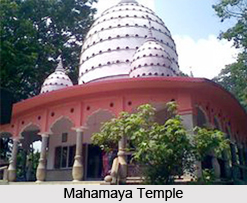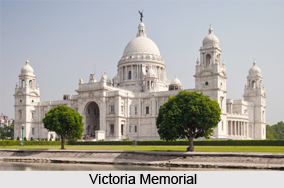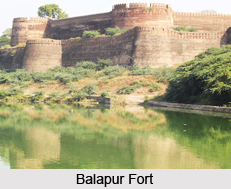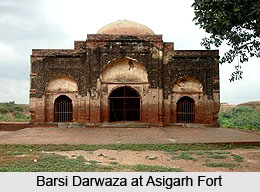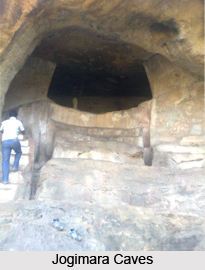Introduction
Gobindgarh Fort is located in Amritsar, Punjab. The Fort
was earlier occupied by the army but is now open to the public from 2017. Today
the fort is being developed as a unique live museum. Gobindgarh Fort is located
on the south west portion of Amritsar. One of the main reasons to erect the
fort was to save Harminder
Sahib and the city from the invaders, who were using the Grand Trunk road
during 18th century for plunder.
Nomenclature of Gobindgarh Fort
Popularly
known as Bhangian da Killa (Fort of the Bhangis) after its 18th-century founder
from the Bhangi Misl of Dhillon Jat rulers, the fort was later renamed by
Maharaja Ranjit Singh in the early 19th century in honor of the 10th Sikh Guru,
Guru Gobind Singh.
History of Gobindgarh Fort
Gobindgarh Fort was originally constructed in the 18th century by Gujjar Singh Banghi, a Dhillon Jat Misldar (militia chief) of the Bhangi Misl and a local chieftain. In the early 19th century, Maharaja Ranjit Singh conquered and expanded the fort, renaming it after the 10th Sikh Guru, Guru Gobind Singh.
The fort housed five cannons, including the renowned Zamzama cannons. During this period, key structures such as the circular pathway in the innermost enclosure, the Toshakhana (treasury), and bastions were built. In 1805, Maharaja Ranjit Singh further fortified the fort to protect Harmandir Sahib and the city from frequent invasions by raiders traveling along the Grand Trunk Road. As part of this expansion, a moat and fortified gates were added, transforming the original mud foundations into a modern military defense structure influenced by French fortress designs. A French architect assisted in the renovations.
Maharaja
Ranjit Singh is believed to have stored his treasury in the Toshakhana, which
included the legendary Koh-i-Noor diamond, along with provisions for an army of
2,000 soldiers. In 1849, following the British conquest, the fort underwent
further modifications, particularly to its bastions and gates, to accommodate
advancements in artillery technology.
Structure of Gobindgarh Fort
This square shaped fort is entirely made out of bricks and lime. The fort had 25 canons mounted on its ramparts and it remained with the Bhangi rulers till 1805. Each of its corners has a parapet and two doors. The main entrance, Nalwa Gate, is named after Hari Singh Nalwa; Keller Gate is the back entrance. There is a tunnel, which runs towards Lahore. The three bastions connected through a rampart depict positive values in the structure of a common thread. The fort earlier had eight watch towers and a coin minting house. Artilleries were also produced at the fort. It also had a watch tower of 50 meters tall. It was later demolished by the Indian Army after independence.
Architecture of Gobindgarh Fort
Constructed from bricks and lime, Gobindgarh Fort is laid out in a square design, featuring parapets at each corner and two entrances. The fort originally housed 25 cannons mounted on its ramparts and had four bastions. Its main entrance, Nalwa Gate, is named after the renowned Sikh general Hari Singh Nalwa, while the back entrance is known as Keller Gate. A tunnel within the fort is believed to lead towards Lahore.
The three interconnected bastions symbolize key principles embedded in the fort's design: the spiritual foundation of martial traditions, a multicultural ethos, a progressive and pragmatic outlook, resistance to oppression, and protection of the weak. The fort’s buttresses likely served as viewing platforms for troop parades and ceremonial events.
A bungalow within the fort was constructed for the commander, using bricks repurposed from an earlier Sikh structure. Originally, the fort had eight watchtowers. Imam-ul-Din, the younger brother of the Foreign Minister of the Lahore Kingdom, was appointed as the fort’s in-charge, succeeded by his brother Taj-Ud-Din as the Qiladar (fort commander). Gobindgarh Fort also housed a coin minting facility and produced artillery.
Raja Dhian
Singh, a key minister in Maharaja Ranjit Singh’s court, maintained his
residence within the fort. It was also the site of the grand wedding of Prince
Nau Nihal Singh, Maharaja Ranjit Singh’s grandson, in 1837.
Built Interventions in Gobindgarh Fort in Different Periods
There have been several interventions in Gobindgarh Fort in
different periods. Below are the enlisted interventions that have been made in
Gobindgarh Fort:
Interventions of Sikh Period: The interventions made during Sikh period are
unique fortification system, circular plinth of the Bungalow, Toshakhana,
bastions, military engineering etc. Toshakhana was built by Maharaja Ranjit
singh. The building was made out of lime plaster. All these renovations have
been done to protect the fort from any kinds of outside attacks.
Interventions of British Period: During British period, Gobindgarh Fort was used as
barracks for housing soldiers. So, the interventions were made to renovate the
fort as barracks. There were changes in bastions for roofing, Bungalow, Darbar
Hall etc. In addition, coffee shop was built inside the fort campus along with
a Chloronome house. The Chloronome house is located west of Durbar Hall and
opposite of the coffee shop. This is a colonial building, built in 1853, which
was used for the treatment and purification of water by chlorination.
Main Attraction in Gobindgarh Fort
The Bhangian di Top, or Zamzama, was a massive and formidable cannon originally belonging to the Bhangi Misl. Weighing approximately 80 pounds, it measured 14 feet 4.5 inches in length, with a bore aperture of 9.5 inches. One of the largest cannons ever built in the Indian subcontinent, it was cast in Lahore in 1757, alongside another of similar size. The cannon was forged by Shah Nazir, a metalsmith serving the former Mughal viceroy, under the orders of Shah Wali Khan, the prime minister of Afghan King Ahmad Shah Durrani.
In 1762,
Bhangi Misl chief Hari Singh attacked Lahore and seized the
cannon, after which it became known as Bhangian di Top. Four decades later, in
1802, Maharaja Ranjit Singh captured Amritsar, bringing the cannon under his
control. He later deployed it in several military campaigns, including those in
Daska, Kasur, Sujanpur, Wazirabad, and Multan. During the 1810 siege of the
Multan citadel, the cannon was transported on a specially built carriage, but
it ultimately failed to fire.
